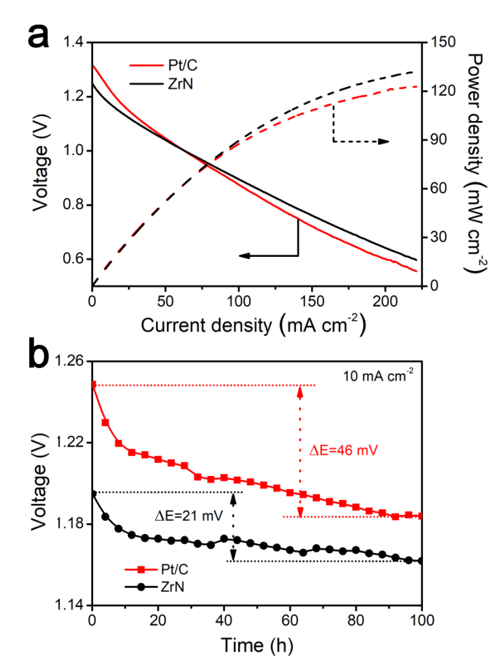

The huge consumption of fossil fuel has led to environmental pollution and an energy crisis. It is foreseeable that, in the near future, limited carbon-based fossil energy will be replaced by endless renewable energy, of which fuel cells and metal-air batteries are the best candidates as sources. However, the Pt catalyst used in the fuel cells is so expensive that its cost accounts for about 20 percent of the total cost of the fuel cell. The high cost limits the wide applications of fuel cells. Therefore, the development of low-cost electrocatalytic materials with high activity and stability still remains a great challenge.
Recently, Prof. Wang Jiacheng from the Shanghai Institute of Ceramics of the Chinese Academy of Sciences, in collaboration with Prof. Yang Minghui from the Ningbo Institute of Materials Technology and Engineering, also of CAS, Prof. J. Paul Attfield from the University of Edinburgh and Prof. Tiju Thomas from the Indian Institute of Technology of Madras Adyar, discovered that zirconium nitride (ZrN) catalyst based on cheap earth-abundant elements is a highly attractive alternative to Pt for oxygen reduction reaction (ORR) in alkaline environments. The ZrN catalyst features low cost, high activity and superior stability. The study was published in Nature Materials (doi: 10.1038/s41563-019-0535-9) under the title “Zirconium Nitride Catalysts Surpass Platinum for Oxygen Reduction”.
Fig. 1 Characterization of ZrN NPs [Image: Prof. Wang Jiacheng’s group]
Fig. 2 ORR catalysis properties of nanoparticulate ZrN and Pt/C in an O2-saturated 0.1 M KOH solution [Image: Prof. Wang Jiacheng’s group]

Fig. 3 Zinc–air batteries using nanoparticulate ZrN or Pt/C cathodes [Image: Prof. Wang Jiacheng’s group]
In this study, the scientists produced fine ZrN NPs using a urea–glass route at moderate temperatures, and showed that ZrN can replace and even surpass Pt as a catalyst for oxygen reduction in alkaline environments. In addition, ZrN has a higher stability than the Pt/C catalyst. In a zinc-air battery device, the performance of commercial Pt catalysts deteriorates significantly after a period of time; while the performance of ZrN catalysts deteriorates much more slowly.
In the future, the research team will further cooperate with industry to bring this research outcome into practical use in the clean energy field. It is expected to answer global concerns about energy crisis problems and environmental pollution.
For more information, please contact;
Prof. Wang Jiacheng
Shanghai Institute of Ceremics, Chinese Academy of Sciences
E-mail: jiacheng.wang@mail.sic.ac.cn
Source: Shanghai Institute of Ceremics, Chinese Academy of Sciences